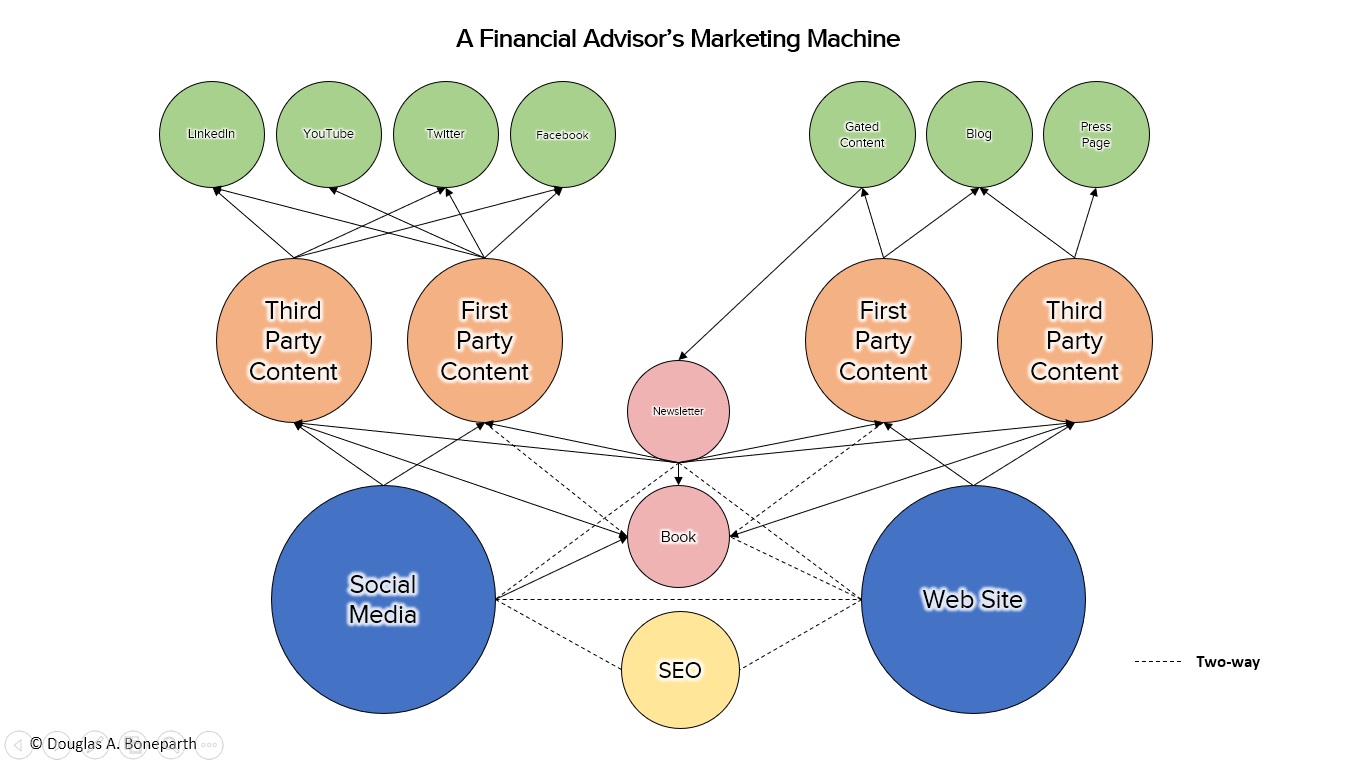To quote Thomas R. “Big Tom” Callahan, Jr., “You’re either growing, or you’re dying!”. When it comes to wealth management, you can grow your business in one of two ways. The first way is organically, through marketing efforts (including referrals), and the second way is inorganic growth, through acquisitions. Throughout my career, I’ve experienced enough of both to share with you the truth. That is, growth from marketing is hands down superior to growth from acquisition.
Both methods are legitimate ways to grow any business and, while I have found success in each method, I took little joy on the acquisition side of things. For me, the first issue I have with regards inorganic growth comes down to fact that you’re was buying someone else’s client relationships. Think about that for a second, “buying someone else’s relationships”. It sounds a little shallow, doesn’t it? It’s like having to buy your friends or a spouse for that matter. Sure you can do it, but what type of foundation is that relationship actually resting on? How genuine is it?
Breaking Down Inorganic Growth
Think of it like this, you pay less to eat inorganic foods because they are not as good for you as eating organically. Can we not say the same about how we grow our businesses? Will your heart be in those relationships like it is for your legacy clients? Will you really care about them as much as if you had cultivated them yourself? Perhaps in the beginning because a ton of money is on the line, but only time will truly tell.
Secondly, there’s the “asset” you’re buying. Last I checked, the marketplace wasn’t flush with practices comprised of “young accumulators”. Far from it. You’re likely buying older clients winding down and, of course, drawing down their assets. So unless you’re locking in those inter-generational relationships right now, those cash flows won’t last forever. So, what happens? You begin to realize that you’re likely going to need another acquisition sooner than later. And no, you’re not Focus Financial. You don’t have their resources.
Speaking of resources, you are not only going to need the financial capital to acquire, but you are going to need human capital as well. I’m less concerned about the financing components since there are now a number of ways to secure funding and structure deals. However, I am concerned with there being the necessary human capital since the last thing you want to do is close on a deal when you’re ill-equipped to handle its administrative, managerial and logistical challenges. By rapidly increasing your volume of clients ahead of what your human resources and infrastructure can handle, you’re making a mistake that generally leads to any number of headaches. Things like staff turnover and under-serviced clients can wind up being the death of you.
Exploring Organic Growth
Now it’s time to push hard for organic growth. Compared to inorganic growth, I believe organic growth can create deeper client relationships and provide greater value and service to the client. It also allows you to manage your resources and build your infrastructure in a more controlled manner. If all this is true, then why isn’t everyone favoring organic growth? It’s because it requires strong marketing skills, which is something most advisors lack and which is why advisors rather choose inorganic growth. Buying a business appears to be more cut and dry. It’s easier to understand.
Additionally, marketing is one of those things that you either love or hate to do. Anyone with a passion for creating things knows what I am talking about. For example, when I am writing a blog post, I can’t stop until it’s done. When I get an idea for a video, I can’t wait to share it. If I have a strong opinion on a study, I’ll find a reporter to talk awith about it. Who knows, maybe I’ll get quoted in an article or even spark the interest of a producer. Before I know it, I am on TV. Then, I am tweeting about it and sharing the clip with my clients and friends. They then share it with their friends and so on and so on.
But look, content is just one dimension of marketing and quite frankly it’s not even where we begin. Content requires context. You need to go beyond executing on a specific tactic and think strategically about what you want your content to do for you. Maybe the goal is brand awareness. Perhaps it’s lead generation that you’re after. In either case, you’re going to need to know things like what piece of content is intended for which audience, as well as which distribution channel to use. It gets even deeper.
Marketing is a lot like a complicated jigsaw puzzle in that it takes time, patience and a strategy to complete. You must be organized and understand the big picture before you can start mashing the pieces together. Your marketing plan should outline this. Most critically, it should identify who you are, who you will be marketing to and how you will go about doing it. From this, you can build out your marketing infrastructure (see mine in the diagram below). Once in place, you can begin a tedious game of trial and error, where you attempt to make incompatible pieces fit before trying something else. It’s important to keep in mind, however, that your marketing failures will be responsible for most of your marketing successes.
Inorganic Growth vs the Organic Machine
With practice and execution, the puzzle’s picture comes into focus. Your marketing efforts mount and start to pick up traction, generate traffic, garner attention, prompt action and eventually generate new business. Along the way, you learn what works and what doesn’t work, what’s worth your time and what’s not. There are few things more exciting in business than the moment you realize you’ve built a marketing machine capable of growing your business. It takes can years to accomplish, but once you see that first gear start to spin, you’re never going to want it to stop.
I’m not out here saying acquisitions are a walk in the park and that you should not attempt them. Anyone who’s been through buying a practice knows it’s not easy. In fact, they are stressful, risky and downright energy draining. Even if you complete the difficult task of finding a seller, it takes proper planning and allocation of one’s resources to be successful. Everything is relative and you should ultimately grow how you want to grow.
However, it’s whistling Dixie when compared to building a marketing machine that’s capable of developing new business. Roosevelt said, “Nothing in the world is worth having or worth doing unless it means effort, pain, [or] difficulty.” Well, when his words are applied to business and marketing, it’s easy to see how true they ring. In order to develop something that makes it seem like you’re simply pulling clients out of thin air, you better believe it’s going to be insanely difficult.
This obviously won’t be my last post on marketing, so I will leave you with this. For the last five years, I’ve spent an inordinate amount of my workday doing something related to marketing. My future depends on it because you’re either growing or you’re dying. I have a long, long way to go to reach my goals for growth but with my machine in place, I no longer have to worry about my pipeline. The best part of all is that I started out with zero dollars and zero assistance. I didn’t require outside capital, need additional staff or have to settle on working someone else’s relationships. I made a conscientious effort to figure it out, roll up my sleeves, execute and have fun.

